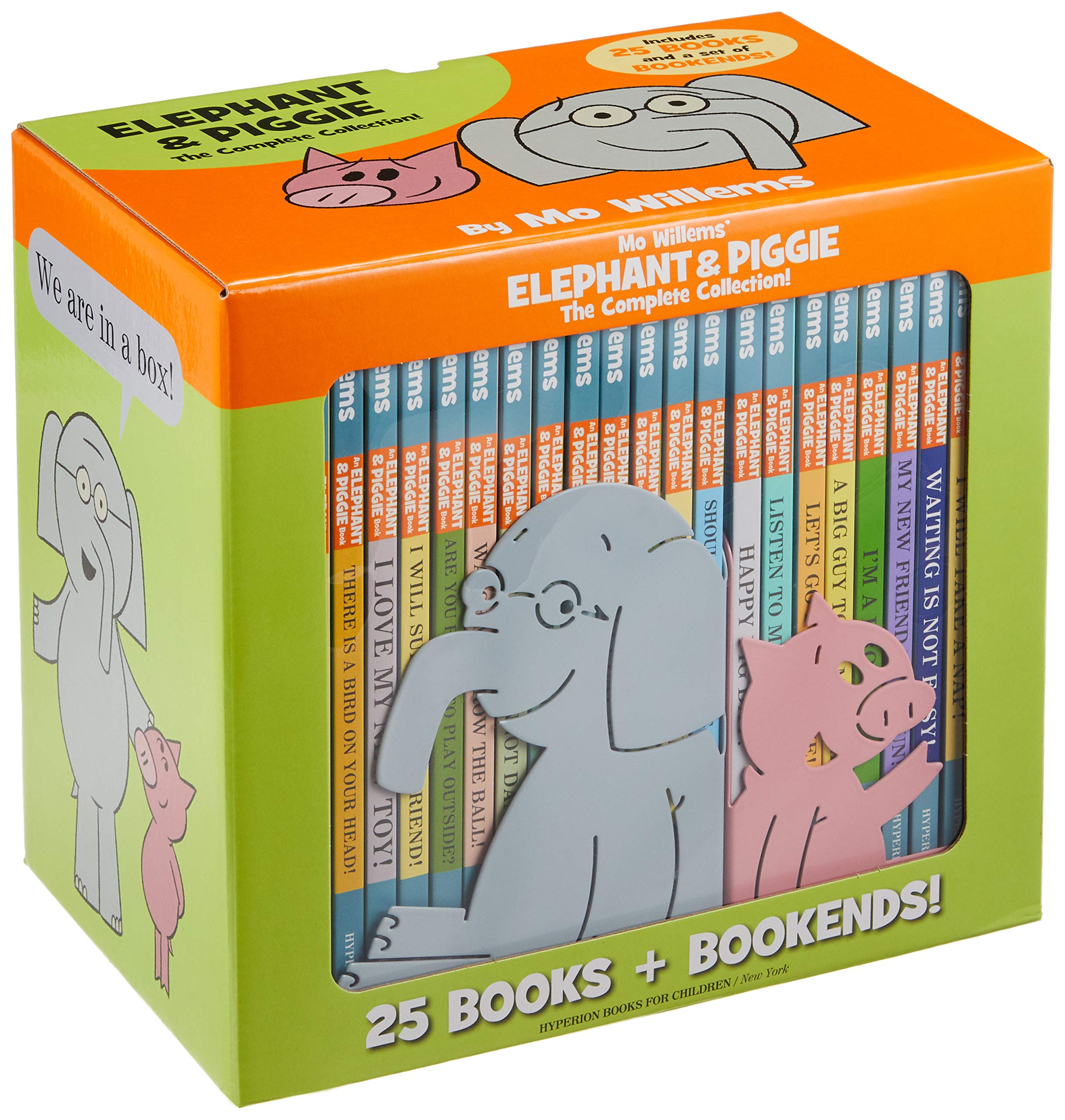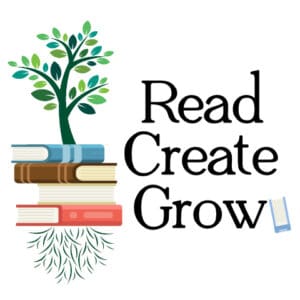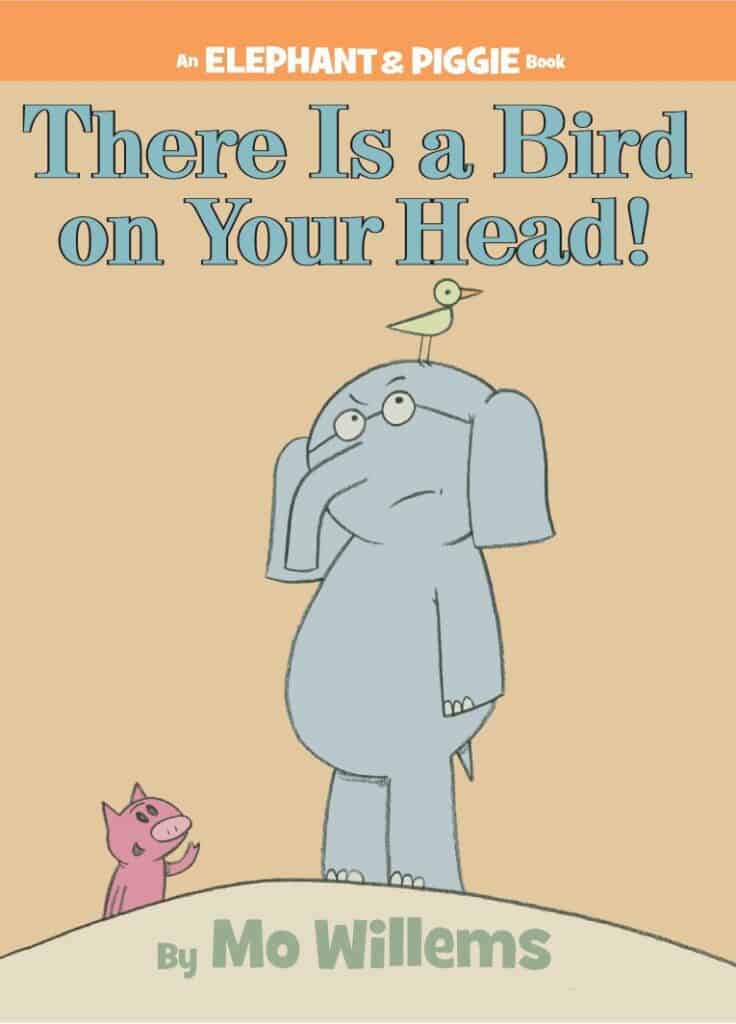Parents wondering if the Elephant and Piggie book series by Mo Willems will be age, content and reading level appropriate for their child is something I come across all the time in the library.
The Elephant and Piggie series is best for children ages 5-7, or in grades Pre-K to Second Grade. The reading levels are Guided Reading Levels G-I, have an AR Score of 0.5-1.4 and a Lexile Level ranging from 140L to 210L. There are twenty-five books in the series and they can be read in any order.
But there is more to know about this beloved children’s series- read on to find out more!
*This post may contain Amazon or other affiliate links. As an Amazon Associate I earn from qualifying purchases.
The best age, grade and reading level for Elephant and Piggie
You might see on Amazon or Scholastic that the age range for the series is 3-8 years old, but in my professional opinion as a children’s librarian, I disagree. The best success I have seen with this series is actually ages 5-7, with an occasional eight year old still loving the series as well. The grade levels that generally coincide with this age range are Pre-K, kindergarten, first grade and sometimes the beginning of second grade.
Kids need to be old enough to understand how to read dialogue format books. The entire structure of this series is a conversation between Gerald (Elephant) and Piggie. Your child has to be at a certain point developmentally to understand that this is an active conversation, not just narrative being read to them.
The series is classified as a “Beginning Reader” which means your child is beginning to tackle reading some things independently. The words will be shorter, usually just one or two syllables, and they will be more commonly heard words. Picture books have the luxury of using a lot of text, with large and detailed images to convey their message. They are usually much longer as well and often come with an adult reading the book out loud to explain the hard words. A Beginning Reader book must make the point with fewer and simpler words and do it better than a picture book, because they rely less on their graphics.
Books in this category can range in difficulty. To add to the confusion, there are a number of different reading level systems used by schools across United States, not to mention the difference in testing that might take place in other countries. If your child was given a reading level score but are not sure what it means, check out this post where I go into greater detail about multiple kinds of reading level systems. Below you can see where each Elephant and Piggie book in the series will fall into the different reading levels.
| Title | Accelerated Reader | Guided Reading Level/F&P | Lexile Level | DRA Level |
| Today I Will Fly! | 0.5 | G | 120L | 12 |
| My Friend is Sad! | 0.7 | G | 120L | 12 |
| There Is a Bird On Your Head! | 1.0 | G | 210L | 12 |
| I Am Invited to a Party! | 0.7 | G | 210L | 12 |
| I Love My New Toy! | 0.5 | G | 100L | 8 |
| I Will Surprise My Friend! | 0.8 | H | 180L | 14 |
| Are You Ready to Play Outside? | 0.6 | G | 140L | 12 |
| Watch Me Throw the Ball! | 1.0 | G | 280L | 14 |
| Elephants Cannot Dance! | 0.9 | H | 150L | 14 |
| Pigs Make Me Sneeze | 0.7 | D | AD40L | 6 |
| I Am Going! | 0.6 | D | 180L | 6 |
| Can I Play Too? | 0.6 | H | 180L | 14 |
| We Are In a Book! | 0.9 | H | 200L | 10 |
| I Broke My Trunk! | 1.3 | G | 400L | 12 |
| Should I Share My Ice Cream? | 1.1 | H | 260L | 14 |
| Happy Pig Day! | 0.7 | G | 170L | 12 |
| Listen to My Trumpet! | 0.8 | G | 280L | 10 |
| Let’s Go for a Drive! | 1.0 | H | 310L | 14 |
| A Big Guy Took My Ball! | 1.0 | G | AD270L | 12 |
| I’m a Frog! | 1.1 | H | 210L | 14 |
| My New Friend is so Fun! | 1.1 | G | 240L | 16 |
| Waiting Is Not Easy! | 0.9 | G | 250L | 12 |
| I Will Take a Nap! | 1.2 | H | 190L | 14 |
| I Really Like Slop! | 1.0 | G | 190L | 12 |
| The Thank You Book | 1.4 | H | 330L | 14 |
What are kids learning from Elephant and Piggie?
Gerald and Piggie teach indirectly about a lot of issues kids face. Should I share what I have? How should I respond when someone breaks something of mine? How do I act if I have been invited somewhere and my friend hasn’t? What should I say to my old friend when I make a new friend? These are issues kids face all the time, and honestly, most adults still face all those issues too.
Besides lessons in being a better person, kids learn how dialogue is structured in a story. As in, they can see the physical lay out of a conversation. This helps them learn how other conversations in books will work later on and it helps them understand how conversations with people work too.
Why do kids love these books?
There is a very specific reason for this: these books are funny! There is a huge difference in the tone of a book that an adult thinks a kid should love compared to the tone of a book that a kid will actually love. Mo Willems just gets that. He was a writer on Sesame Street for nine years and an animator for several other kid’s television shows before writing his own books. Not only does he understand how to make kids laugh, he treats them like people.
I really feel that the difference between kids and adults is that kids are shorter.
Mo Willems
Many children have been read the most amazing and colorful stories in their young lives. Why would they be interested in why the cat sat on the mat when they finally get the chance to read on their own? Elephant and Piggie give kids a chance to read a story that has substance that doesn’t preach at them. Instead it makes them laugh, and maybe sneaks in a lesson as well.
If your child becomes (or already is!) an avid Elephant and Piggie fan, you may want to consider purchasing the box set, so you never have to be without a Gerald and Piggie adventure again. For the amount of books in the set and the number of trips you will save yourself going to the library (and late possible late fees) it’s well worth the price.

Elephant and Piggie: The Complete Collection
This set comes with the 25 books published to date as well as metal Gerald and Piggie bookends to complete the set!




